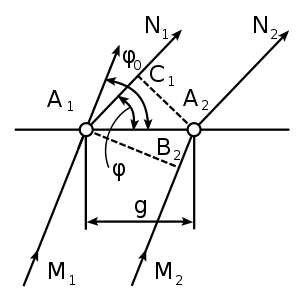Laue equations

In crystallography, the Laue equations give three conditions for incident waves to be diffracted by a crystal lattice. They are named after physicist Max von Laue (1879–1960). They reduce to Bragg's law.
Equations
Take to be the wavevector for the incoming (incident) beam and to be the wavevector for the outgoing (diffracted) beam. is the scattering vector (also called transferred wavevector) and measures the change between the two wavevectors.
Take to be the primitive vectors of the crystal lattice. The three Laue conditions for the scattering vector, or the Laue equations, for integer values of a reflection's reciprocal lattice indices (h,k,l) are as follows:
These conditions say that the scattering vector must be oriented in a specific direction in relation to the primitive vectors of the crystal lattice.
Relation to Bragg Law
If is the reciprocal lattice vector, we know . The Laue equations specify . Hence we have or .
From this we get the diffraction condition:
Since (considering elastic scattering) and (a negative reciprocal lattice vector is still a reciprocal lattice vector):
- .
The diffraction condition reduces to the Bragg law .
References
- Kittel, C. (1976). Introduction to Solid State Physics, New York: John Wiley & Sons. ISBN 0-471-49024-5